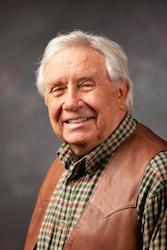 Tanner, C. K. (2013). Dr. Tanner conducted his research about new learning environments being built and took into consideration numerous variables. For example, school systems consider the instructional needs of the students they serve, enrollment, and whether to replace or remodel an old building. The concept of “going green” encourages school system planners to consider the natural surroundings and built environment that surrounds the school, thereby allowing the school's architecture to match its surroundings. This notion has sparked an interest in sustainable design, which may best be explained as minimizing the harmful effects of the building on the environment. It further extends to the theory of biophilia or a natural attraction to living systems. Sustainability and the biophilia premise go far beyond just following new codes for construction and materials related to Leadership in Energy and Environmental Design certification. They link directly to aesthetics.
Tanner, C. K. (2013). Dr. Tanner conducted his research about new learning environments being built and took into consideration numerous variables. For example, school systems consider the instructional needs of the students they serve, enrollment, and whether to replace or remodel an old building. The concept of “going green” encourages school system planners to consider the natural surroundings and built environment that surrounds the school, thereby allowing the school's architecture to match its surroundings. This notion has sparked an interest in sustainable design, which may best be explained as minimizing the harmful effects of the building on the environment. It further extends to the theory of biophilia or a natural attraction to living systems. Sustainability and the biophilia premise go far beyond just following new codes for construction and materials related to Leadership in Energy and Environmental Design certification. They link directly to aesthetics.
C. Kenneth Tanner, Professor of Career and Information Studies, University of Georgia, Athens, is a graduate of Florida State University. He teaches graduate courses in educational planning, policy, and organizational studies. His research chain takes into consideration how the physical environment influences behavior and productivity. Most recently, he is working on comparing student productivity in "green" schools, and is consultant to both public and private schools that are planning educational facilities. Dr. Tanner has published and presented over 150 articles, book chapters, and academic papers. He is the primary author of four textbooks and his most recent book on educational facilities planning and design is among the best selling works in the areas of academic and applied studies of school facility planning.

